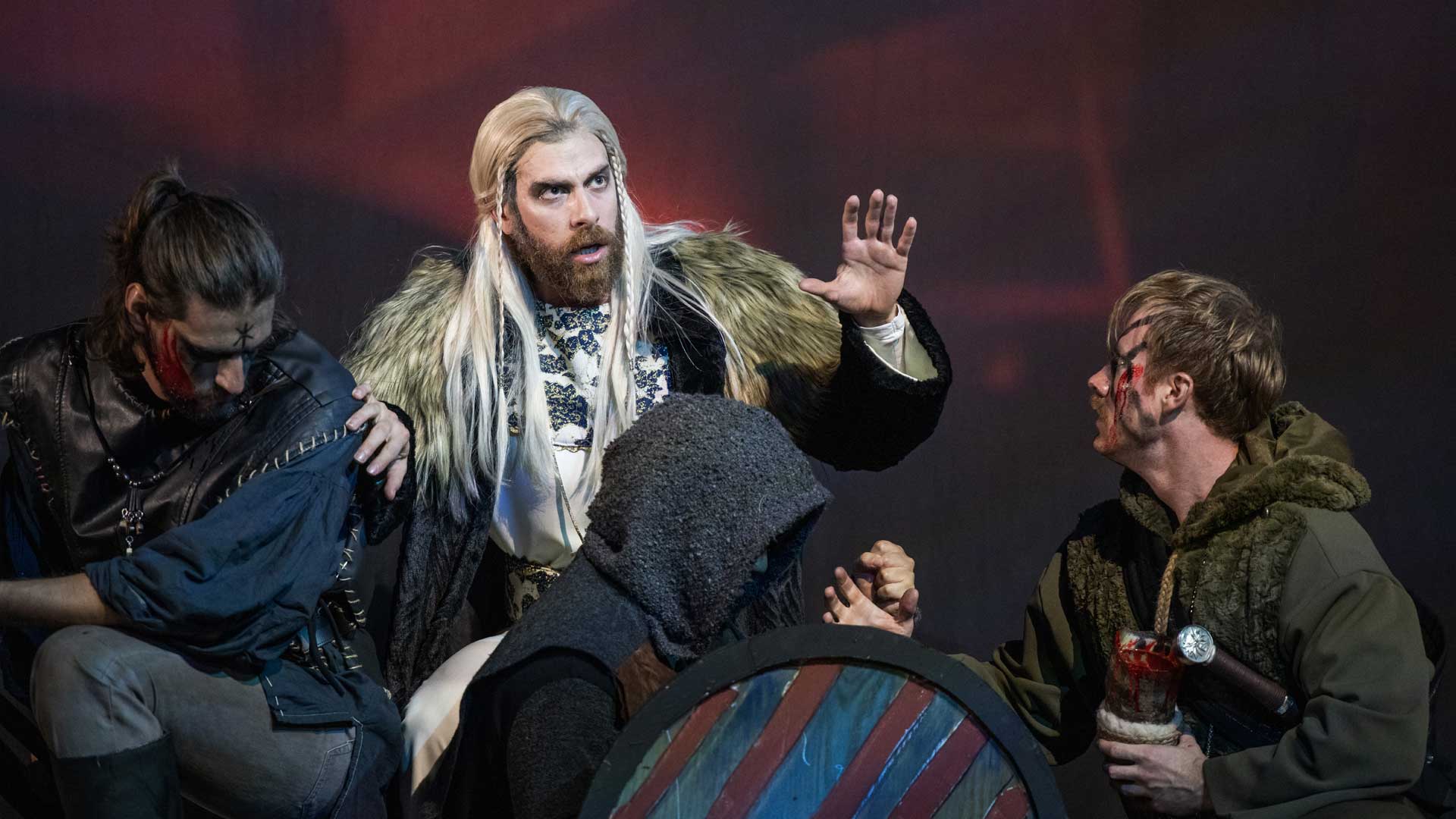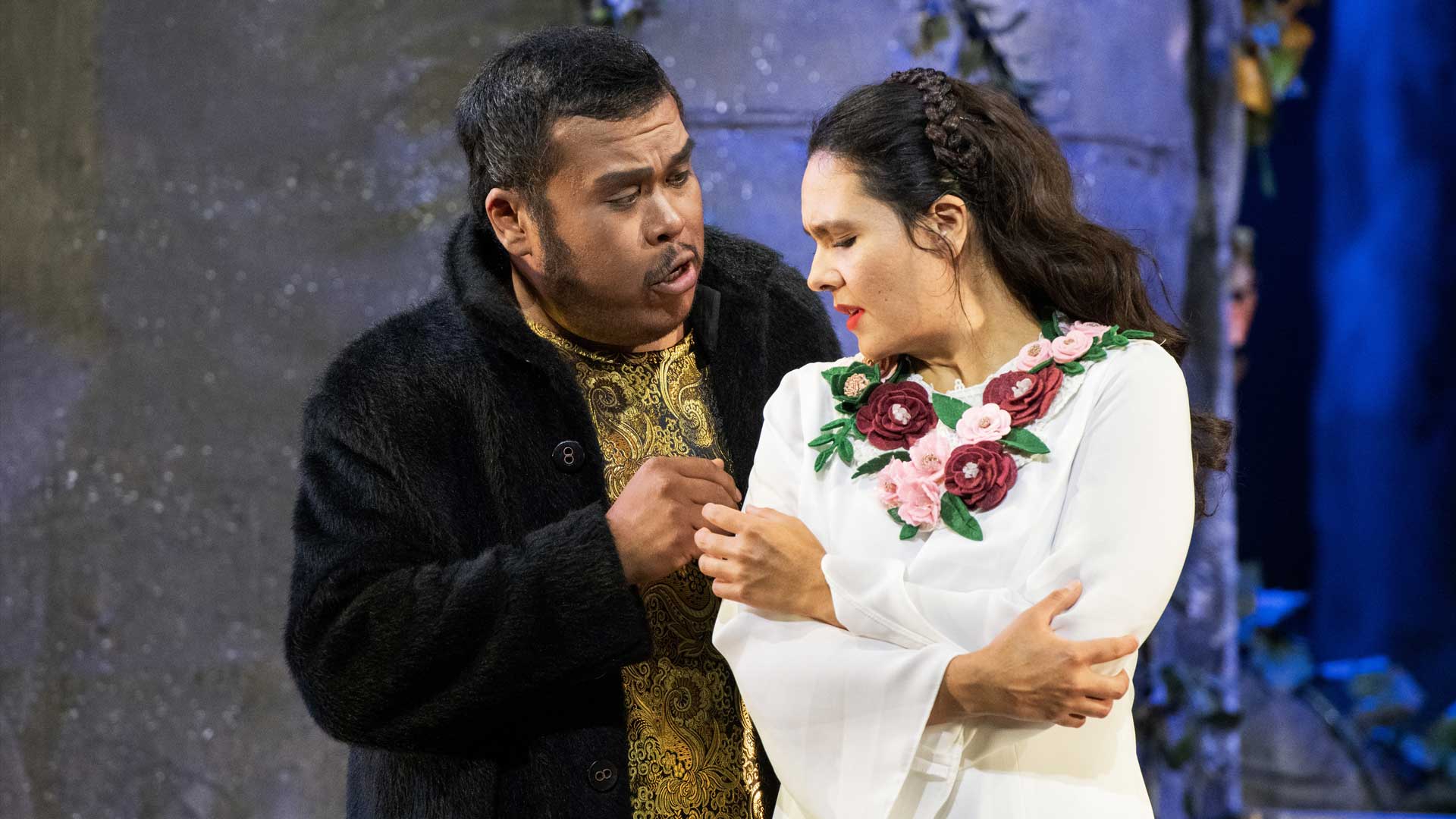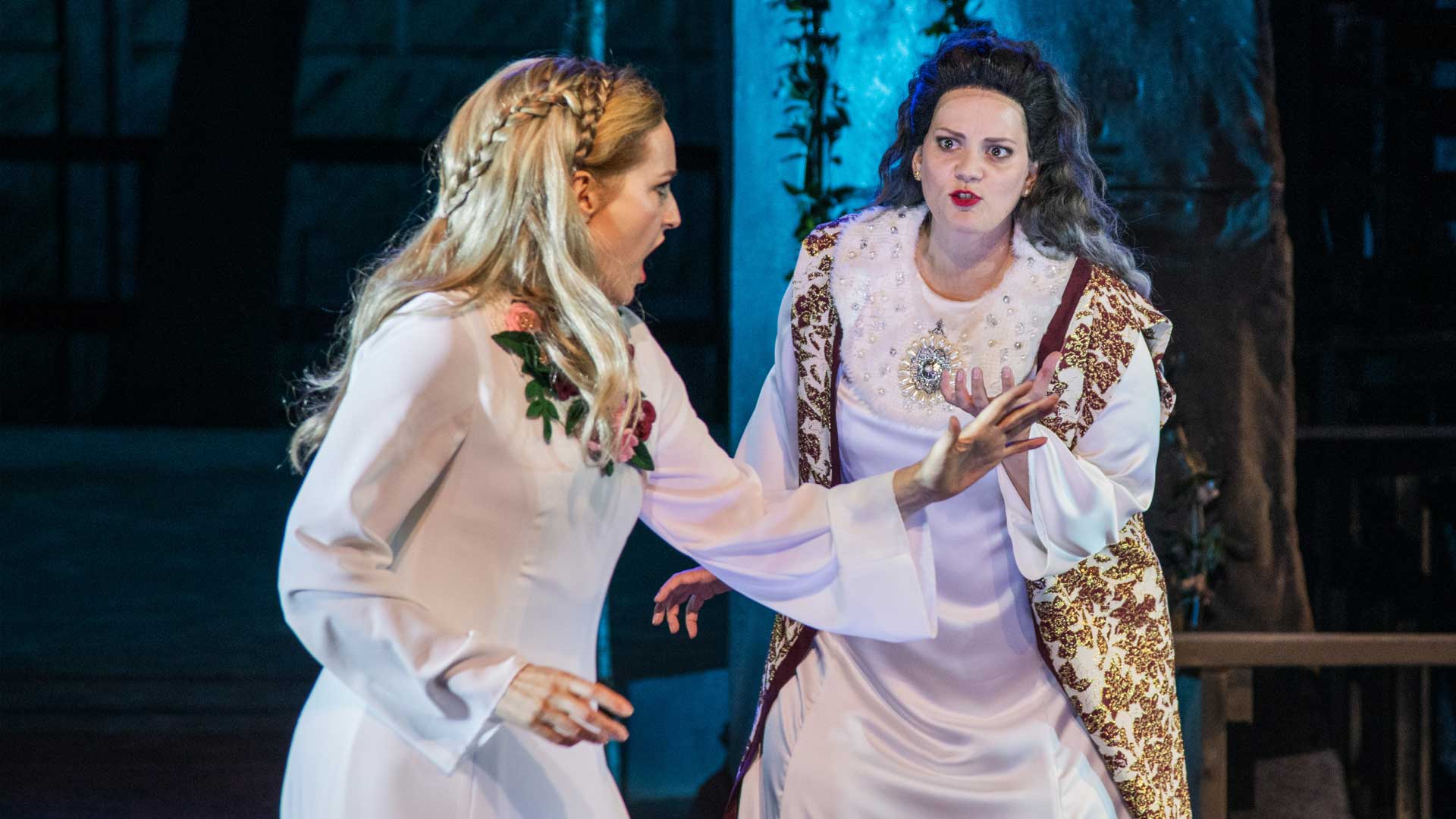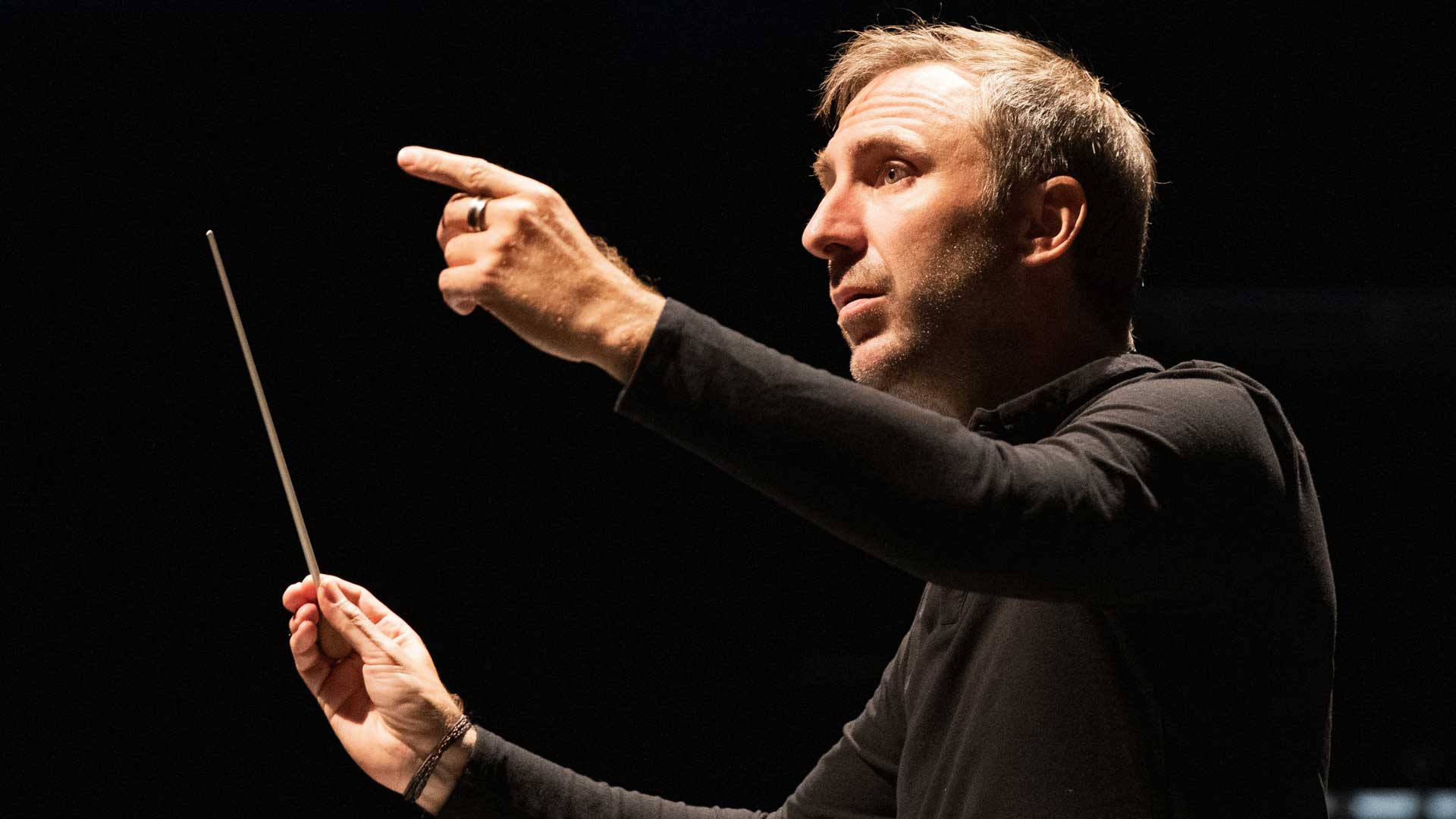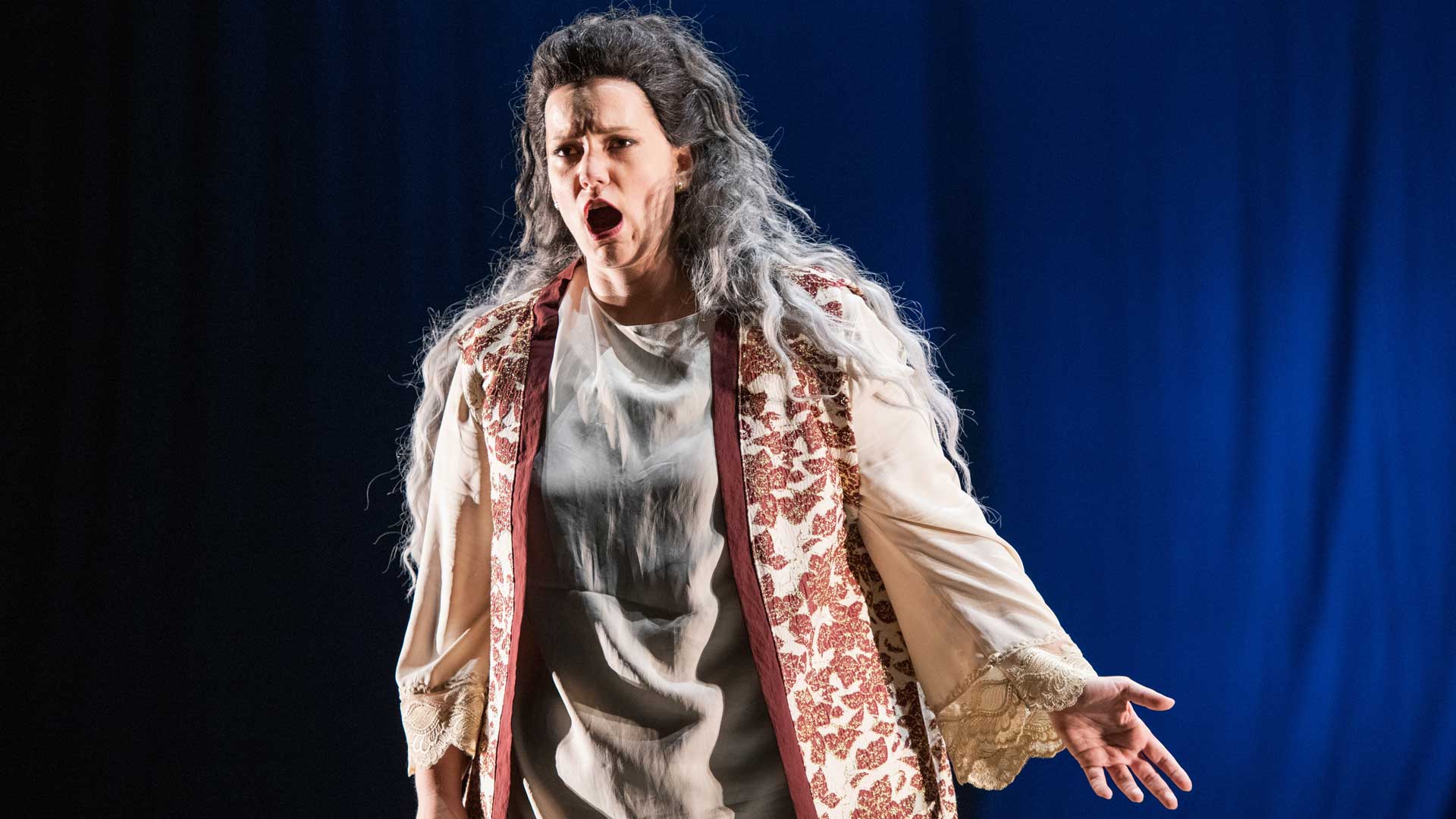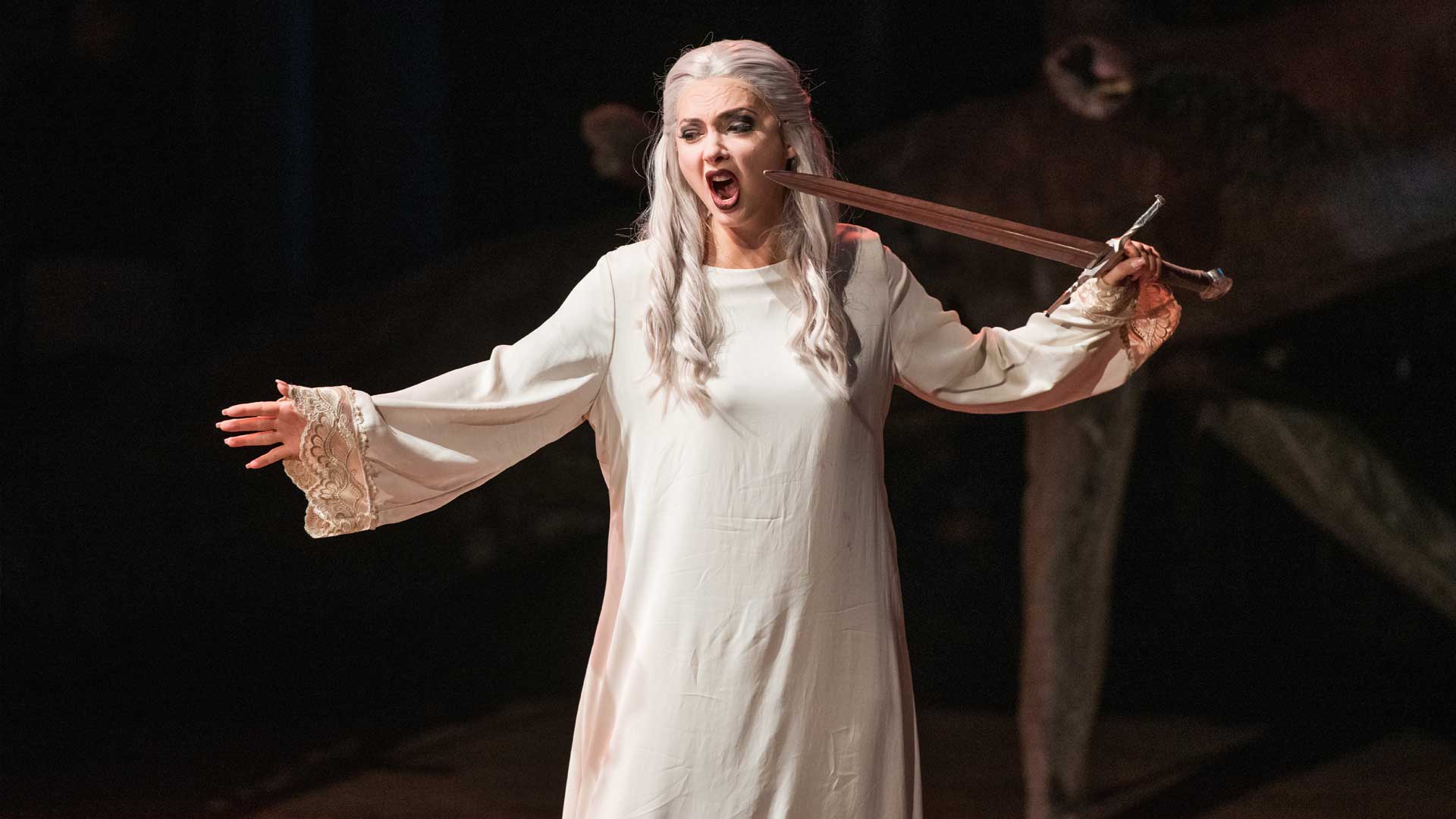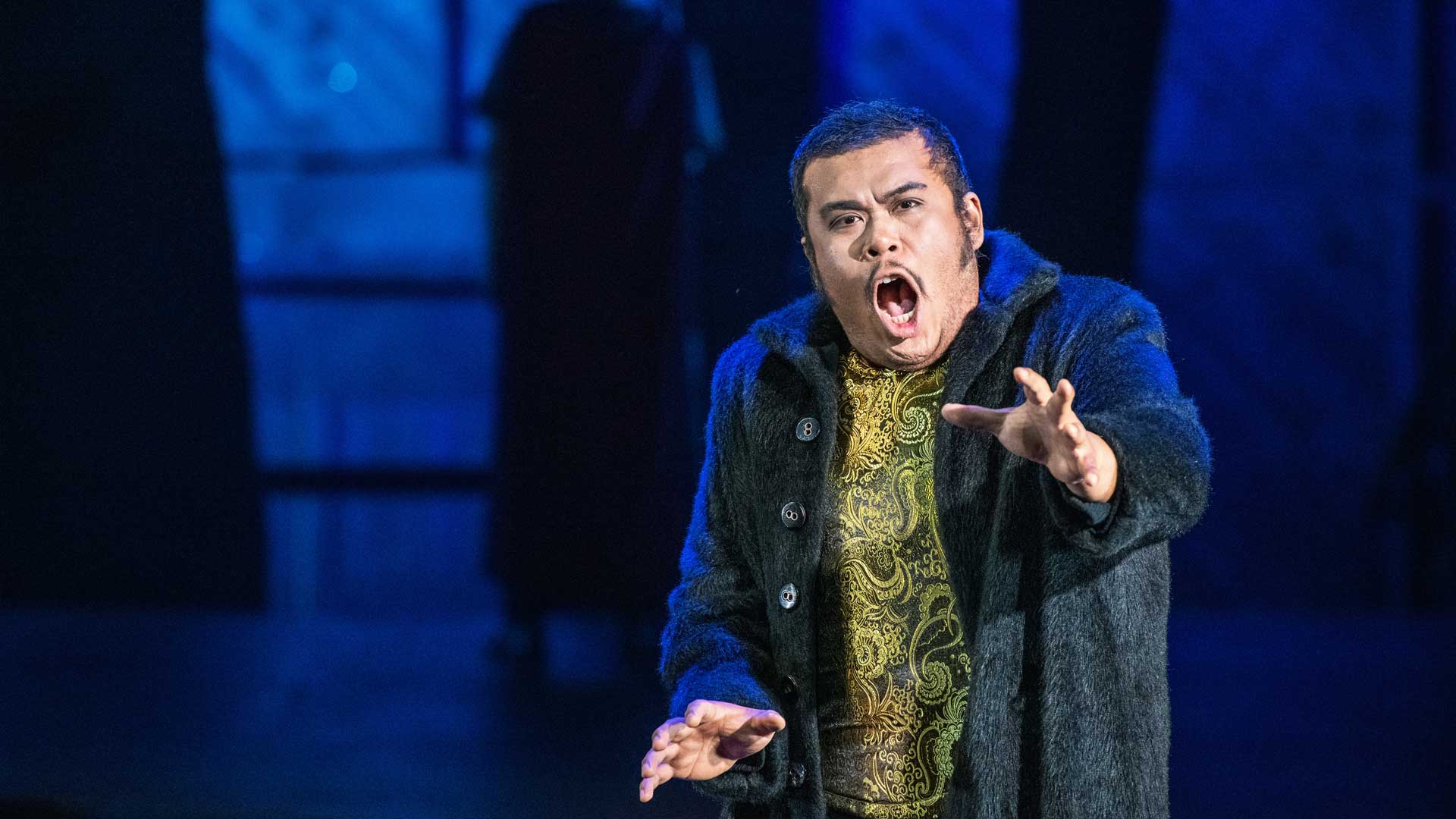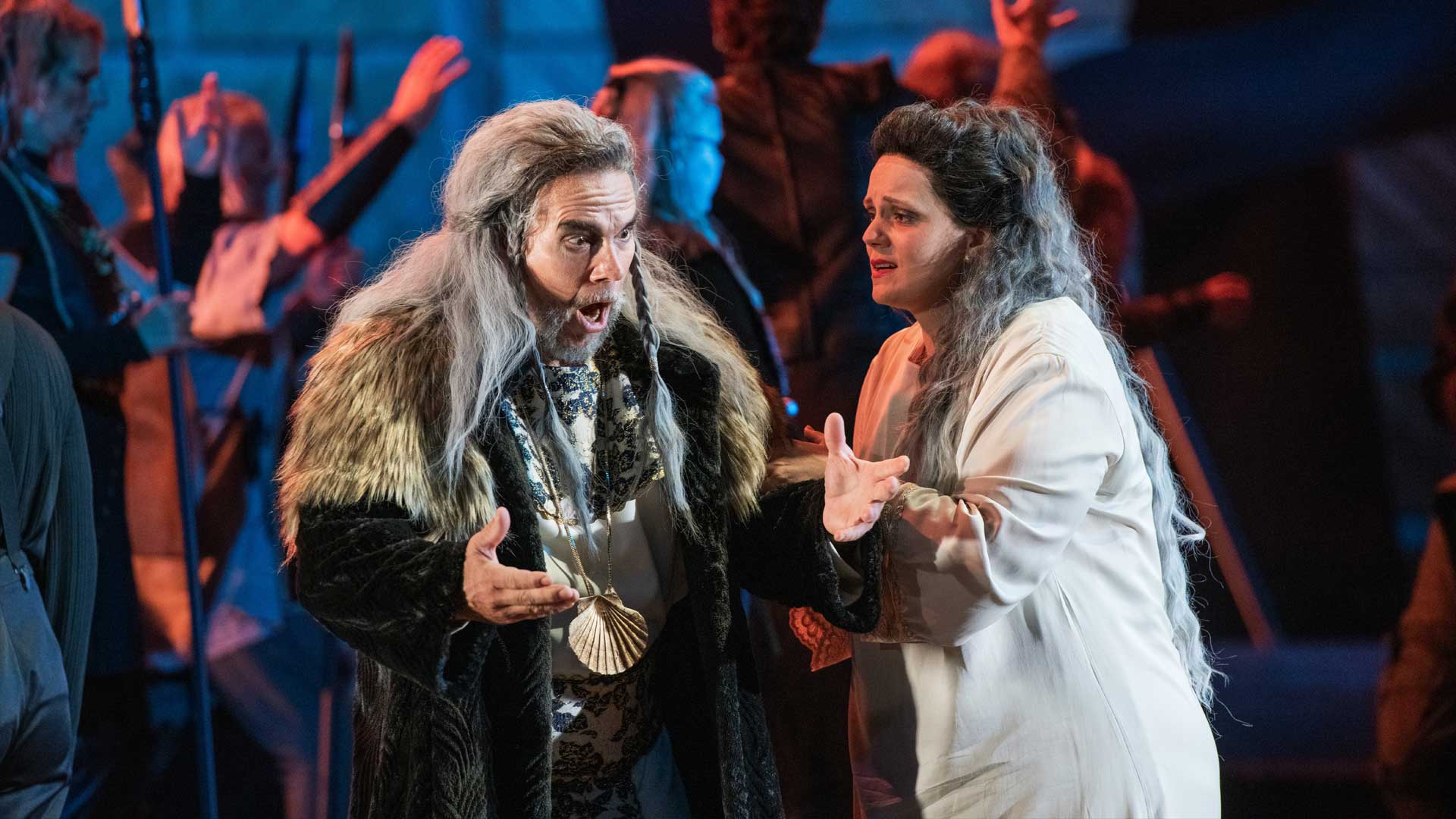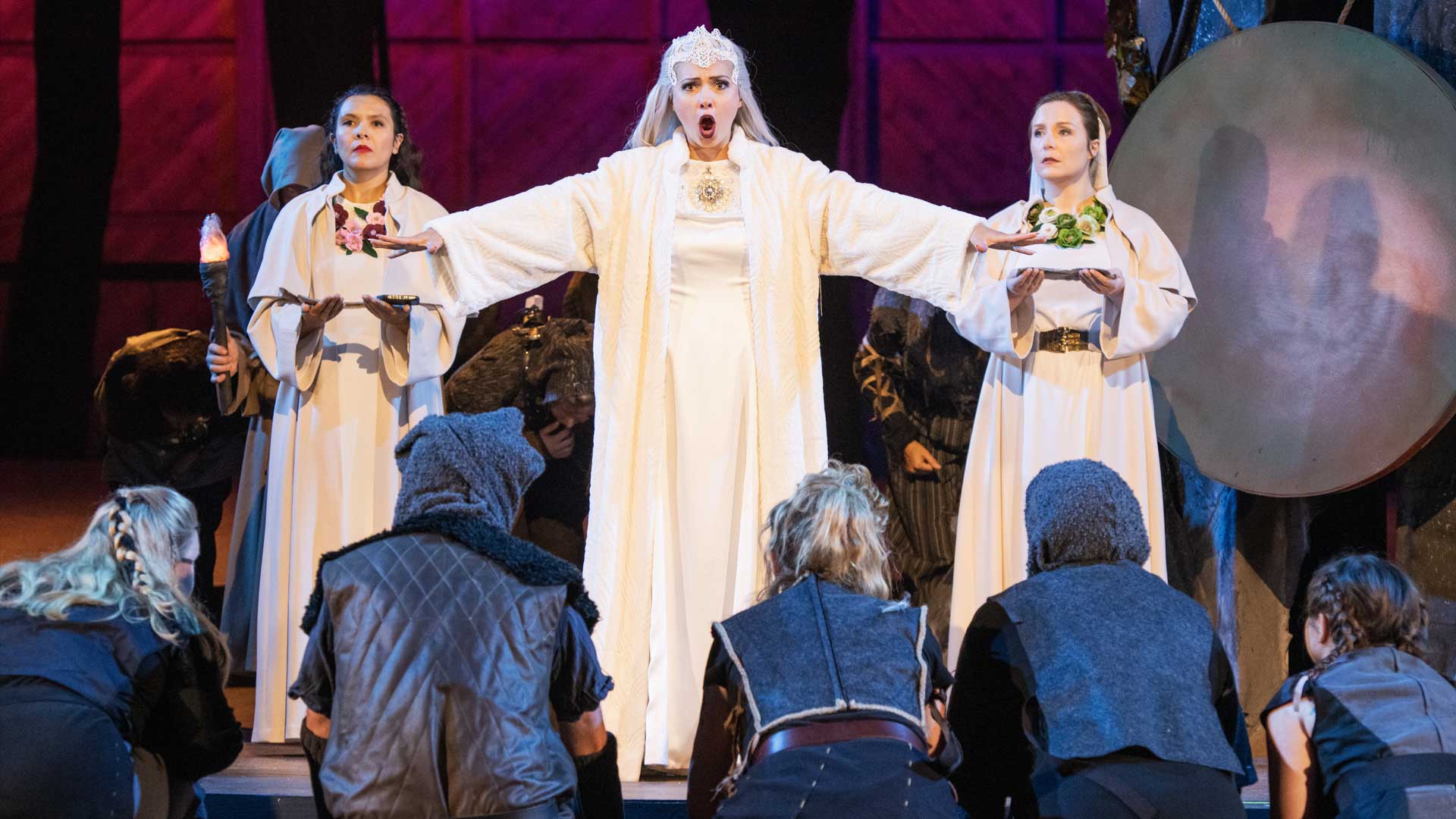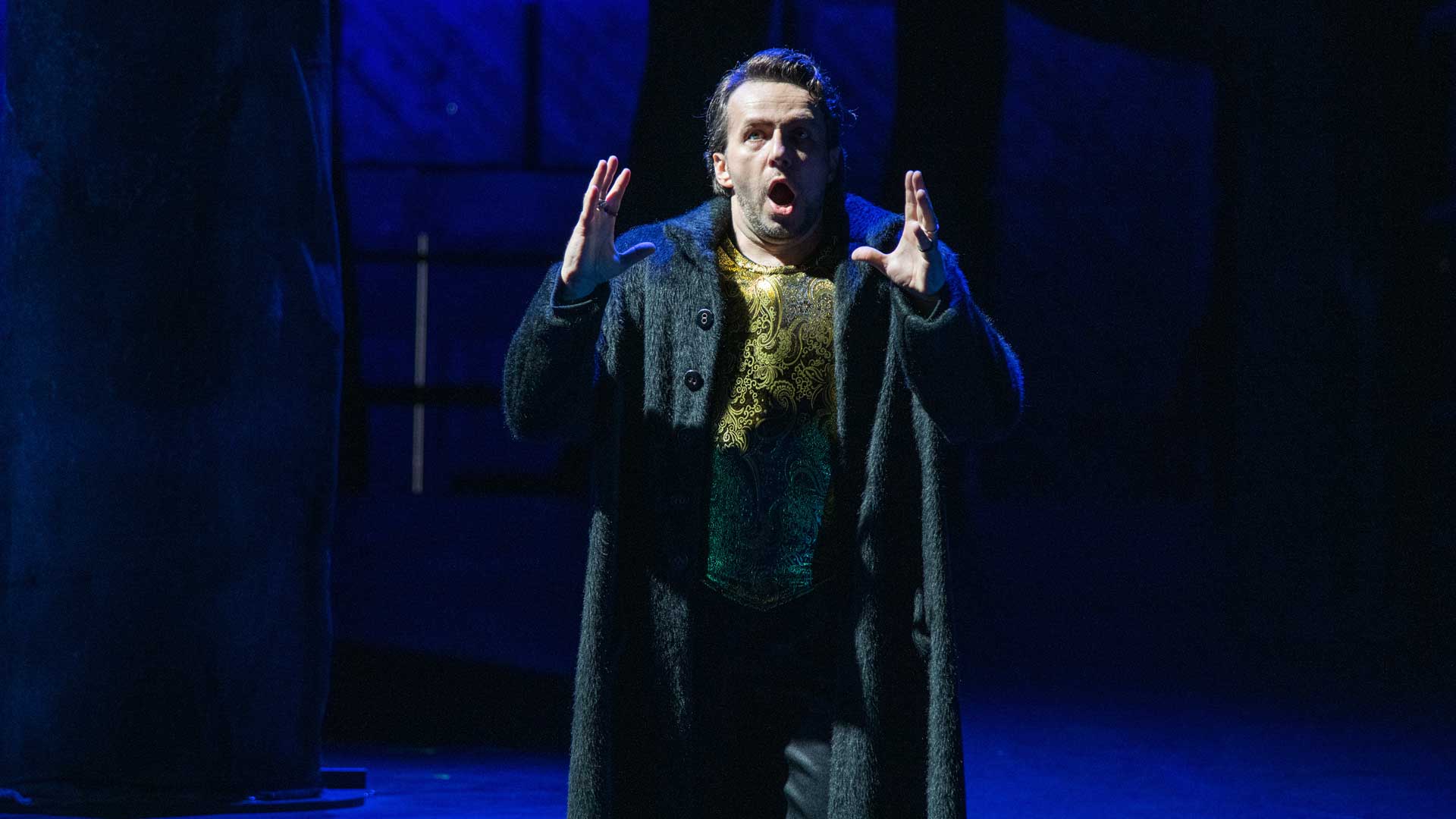Norma
Vincenzo Bellini27th july – 25th august 2024
“As enchantingly beautiful as it is frighteningly dark in the fateful norma at skäret”
That is how a quote from the newspaper Nya Wermlands-Tidningen reads in its review of Norma, this year’s summer opera at Skäret. Two singing teams premiered during the last weekend in July, and this is what the critics thought.
“…it is with a marvelous legato that Šarić impacts the listeners; a care for the emotional content of the melody, and Bellini absolutely piles up fragments and fully developed songs in everything from snappy marches to soft cantilenas. There are spectacular diminuendos and crescendos – yes, a voice control in the larger lines that one seldom hears even as an experienced opera-goer. The same confidence and ease characterize the German mezzo Anna Werle (Adalgisa), who also adds the best acting ability on stage. It is during some scenes between these ladies that Skäret’s summer opera truly sparks this year.” – Falu-Kuriren
“Werle and Šarić create the women’s Norma” – Falu-Kuriren
“The scenographer Sven Östberg has been involved in many productions here, but this time I think it was particularly effective.” – Nerikes Allehanda
“It is the great female roles that are particularly memorable and of the highest class in Norma at Skäret.” – Nerikes Allehanda
“Pollione is sung this evening by Vitaliy Kovalchuk. His tenor is a powerful laser beam.” – Nerikes Allehanda
“…there and in many other places, the orchestra under Michael Balke is captivating” – Falu-Kuriren
Solists
Pollione – Nutthaporn Thammathi / Vitaliy Kovalchuk
Adalgisa – Anna Werle / Andrea Niño
Oroveso – Tyler Putnam / Petri Lindroos
Clotilde – Mathilda Bryngelsson
Flavio – Chan Young Kim
Artistic Production
Direction – Alexander Niclasson
Conductor – Michael Balke
Set design and costume concept – Sven Östberg
Costume – Tina Carina Akkaya
Wig and make up – Stephanie Metzner
Light design – Maria Ros
Repetiteur – Bengt-Åke Lundin
Repetiteur – Samuel Skönberg
Choir Master – Jonatan Lönnqvist
Choir Repetiteur – Mats Johansson
The soloists sings at the following dates:
27th july, 3rd aug, 8th aug, 11th aug, 17th aug, 24th aug
Norma – Sonja Šarić
Pollione – Vitaliy Kovalchuk
Adalgisa – Anna Werle
Oroveso – Petri Lindroos
Clotilde – Mathilda Bryngelsson
Flavio – Chan Young Kim
28th juli, 4th aug, 10th aug, 15th aug, 18th aug, 25th aug
Norma – Alina Tkachuk
Pollione – Nutthaporn Thammathi
Adalgisa – Andrea Niño
Oroveso – Tyler Putnam
Clotilde – Mathilda Bryngelsson
Flavio – Chan Young Kim
Opera på Skäret’s Orchestra
Opera på Skäret’s Choir
27th july – 25th august 2024
Föreställningslängd: 3 timmar inkl. en paus på 45 minuter.
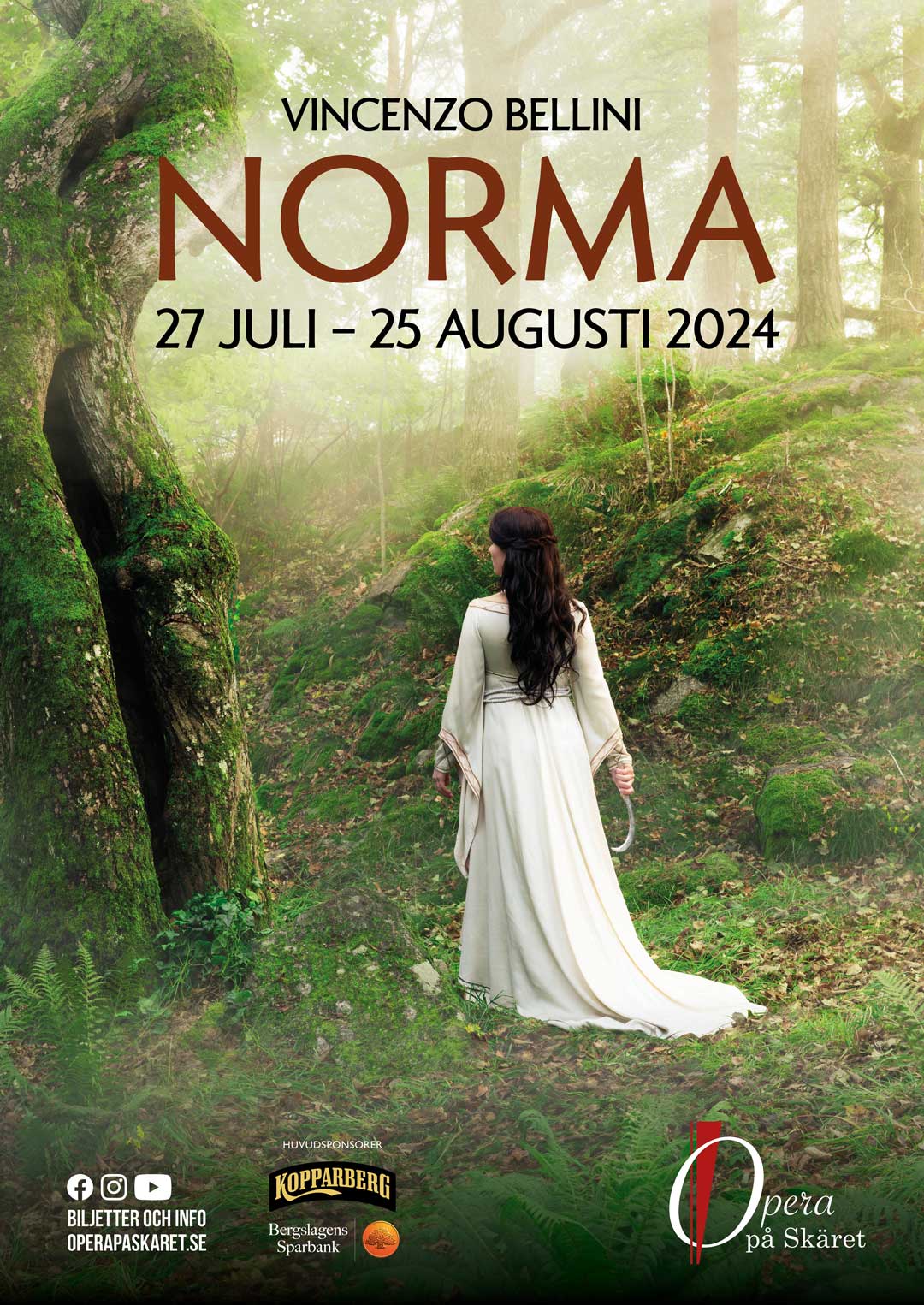
Norma
Here at Opera på Skäret, music composed by Vincenzo Bellini will be heard for the first time. With Bellini’s “Norma,” Opera på Skäret tackles a gripping portrayal of women with connections that feel relevant even in our time.
Norma, rooted in the Italian bel canto tradition, is Vincenzo Bellini’s most performed opera. Like no other, Bellini, also known as the master of beautiful melodies, expresses emotions with such intensity and beauty. Norma is perhaps precisely for this reason an opera that offers several well-known arias, including “Casta Diva,” one of Maria Callas’s great showpieces.
Norma had its world premiere in 1831 at La Scala opera house in Milan and has since been part of the repertoire of many major opera houses. This summer, it will be performed in one of the world’s most unique opera houses, a former sawmill located by the shore of a vast lake, now famous for its acoustics.

This year, it was finally time to stage one of Vincenzo Bellini’s operas at Opera på Skäret. Since Norma is one of my favorite operas, the choice of work was easy. It is also easy to be seduced by Bellini’s enchanting music, which I experienced at the age of 14 when I bought my first recording of Norma with Maria Callas and Franco Corelli in the lead roles. The art of singing is undoubtedly the focus of this masterpiece, but that does not make it any less scenically interesting.
The libretto by Felice Romani is dramatically exciting and offers us opportunities for interpretation. The same goes for Bellini’s stage directions in the score. Some things are very clear, while others are left to us successors to interpret. I have chosen to set the action in the century A.D. as the creators intended. This is mainly because I am convinced that the primary task of the director is to do justice to the musical-dramatic works and not try to outdo the creators. The possibilities for variation are still endless with that approach.
In working with the text, I was fascinated by how the Gauls’ worship of the god Irminsul infiltrates their approach to all aspects of life. A strong religious conviction is quite foreign to today’s secularized generation now living in Sweden. But for the Gauls, according to Felice Romani, religion was in the very centre of their society and way of life, aand I have emphasized that. The Gauls’ anger towards the occupying superpower Rome can easily be overshadowed by the strong love triangle, but for me, it is so central to the work that I simply must highlight it. As occupying military powers have behaved in all historical events of humanity, the Romans scare their subjugated with strongly organized military power and meaningless violence against the occupied population. In the opera Norma, the Gaulish population does not remain silent. The Gaulish anger is tangible, and when it gets free rein in the second act, it adds weight to Norma’s desperately exposed situation. Never has a character in an opera had more weight on their shoulders than Norma.
Alexander Niclasson
Director & Artistic Leader

ABOUT THE MUSIC
Bellini’s Norma stands as a crowning achievement of the belcanto opera era, celebrated for its intricate musical tapestry and emotional depth. At its core, the opera exemplifies his mastery in blending lyrical beauty with dramatic intensity, creating a captivating narrative driven by its rhythmic pulse and dynamic contrasts.
From a conductor’s standpoint, Norma presents a rich canvas of musical dramaturgy. The opera’s rhythmic vitality propels the narrative forward and underscores the emotional nuances of its characters. Instrumental solos, prominently featuring the flute, play a crucial role, intertwining with the vocal lines, creating intimate dialogues, and establishing a profound interaction between instruments and singers.
The opera’s iconic aria “Casta Diva” exemplifies Bellini’s ability to marry technical virtuosity with expressive lyricism. This aria, sung by Norma as a prayer to the moon goddess, showcases Bellini’s gift for crafting melodies that soar effortlessly, supported by delicate orchestration that evokes a serene, otherworldly atmosphere. The orchestral palette enhances the aria’s ethereal quality, setting it apart as a quintessential moment in the belcanto repertoire. Throughout Norma, the chorus plays a pivotal role, not merely as a backdrop but as an integral part of the opera’s narrative and emotional landscape. Bellini’s choral writing ranges from sublime hymns of the Druids to stirring calls to arms, each contributing to the opera’s dramatic arc and thematic depth. The chorus’s dynamic presence underscores the opera’s societal conflicts and personal dilemmas, amplifying the emotional impact of key scenes.
The 1830s was a period of rich musical innovation and stylistic diversity. In opera, the belcanto tradition reached its zenith with composers like Bellini, Donizetti, and Rossini, whose works emphasized expressive singing and virtuosic vocal techniques. This decade also saw a shift towards more psychologically complex storytelling in music, laying the groundwork for later romantic operas. Norma, premiering in 1831, encapsulates the essence of bel canto while foreshadowing these trends with its emotional depth and structural innovations.
Other significant compositions of the 1830s further underscore the decade’s importance in music history. Hector Berlioz’s Symphonie fantastique (1830) introduced groundbreaking orchestration and programmatic storytelling. Frédéric Chopin composed many of his beloved piano works, including an Étude that directly quotes a cello melody from Norma. Other important works of this time include Mendelssohn’s 3rd Symphony (“Scottish”), Donizetti’s Anna Bolena, and Rossini’s last opera Guillaume Tell. These works highlight the vibrant and transformative nature of the 1830s, a period marked by profound advancements in musical expression and form.
Michael Balke
Conductor
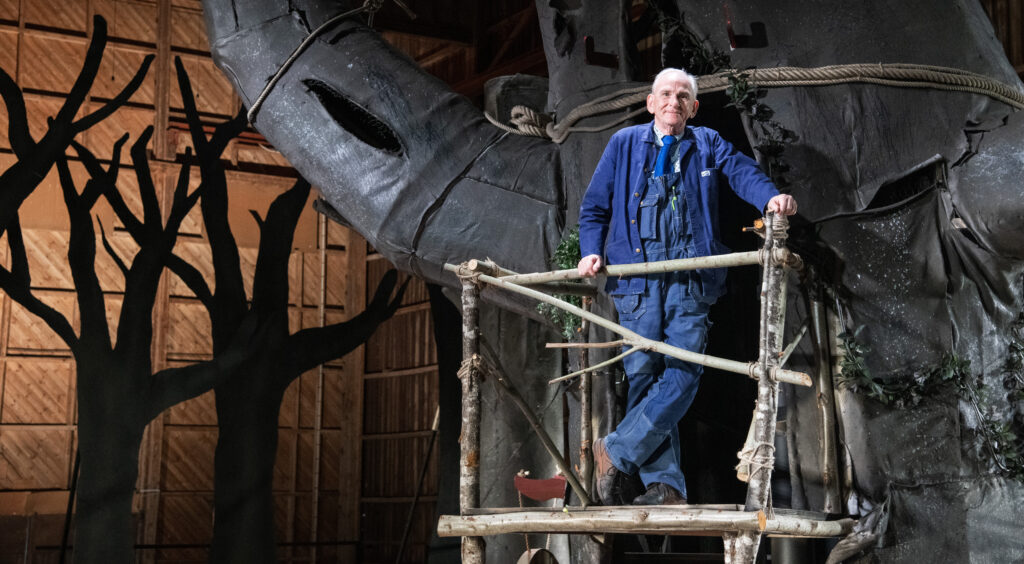
about the set design
The creators of Norma set the action in Gaul around the year 100. They had good reasons for this. They wanted to avoid interference from contemporary censorship. No one could accuse them of commenting on the current political situation.
The opera’s libretto says nothing about the physical surroundings, and we really do not know much about what Gaul looked like in the year 100. In such a situation, one must rely on the scenographer’s imagination. The scenographer simply has to imagine something that could be accepted as Gaul almost 2,000 years ago.
The Gauls were led by druids both politically and religiously. The religion of the Gauls was closely tied to nature. For example, whether to revolt against the Romans or not was decided by the appearance of the moon and what the cut mistletoe branch revealed. Therefore, the drama takes place in and around the Gauls’ sacred grove.
At the centre of the sacred grove is a very large and ancient tree. The tree is as old as Gallic society. It is also in equally poor condition. Just as the occupied Gauls try to hold together their society, which is poorly managed by the Romans, they try to hold the large tree together. There in the sacred grove, the Romans, who stay behind the dark forest silhouette, make regular raids.
Sven Östberg
Set Design & Costume Concept
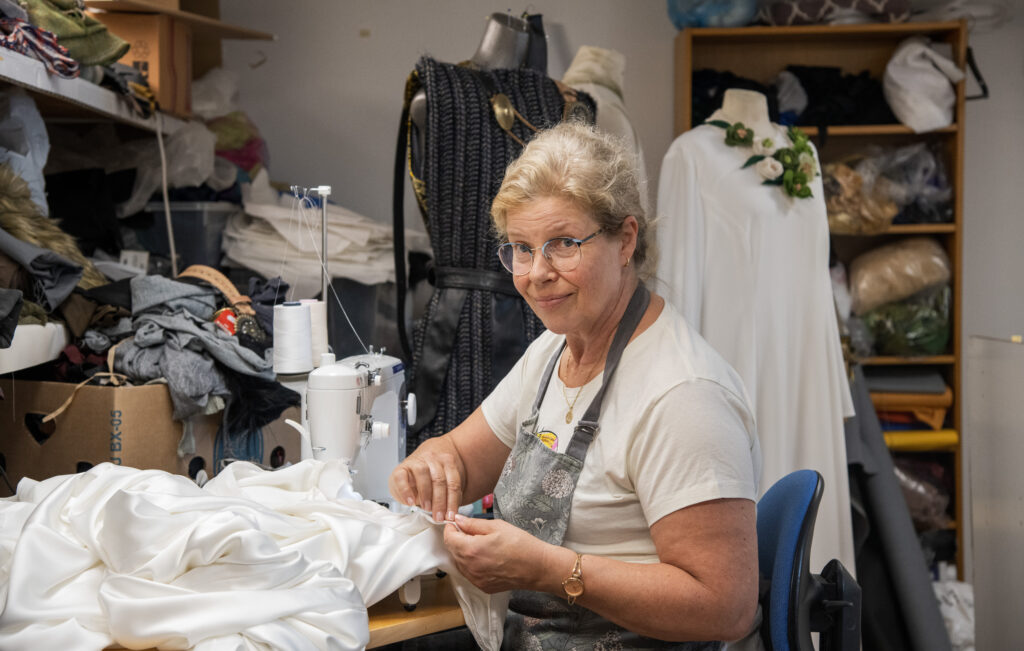
ABOUT THE COSTUME DESIGN
In the production of Norma, we have worked with a fantasy style. Nothing is historically accurate. We wanted to create great contrasts between the different characters. The Gauls, who live in the forest under great oppression from the Romans, have made their own costumes out of what they have found: sticks, bark, leather, fur, and various metal objects from their raiding expeditions.
Flavio and the Roman soldiers can be distinguished from afar with their beautiful uniforms in leather and metal in the colours black, burgundy, and bronze. They are as ruthless and cruel as they are striking. The most powerful of them all, the high priest Orveso, commands great respect, which is reflected in the costume he wears. A brocade costume with beautiful patterns and details in fur and gold.
The main character, Norma, also holds a high status. She is a high priestess, and this is reflected in her white ceremonial robe in satin and fur with a collar decorated with pearls and silver.
Norma offers a story with great drama, and the costumes are designed to emphasize this.
Tina Carina Akkaya
Costume Designer, Costume Studio Manager & Tailor

ABOUT MAKEUP & WIG
What are the character traits of a role? How does the role develop throughout the performance? How can I underscore or amplify existing individuals’ expressions? These are the questions I ask myself when designing a singer’s look.
What are the character traits of a role? How does the role develop throughout the performance? How can I underscore or amplify existing individuals’ expressions? These are the questions I ask myself when designing a singer’s look.
At an early stage, it became clear that the expression we have wanted to achieve in Norma was a mixture between a fantasy and a historical one. Another thing that became clear rather early was that the limits for how far we could go were almost non-existing. Having no frames can be rather fun, but also rather challenging.
Another challenging part in this production, that takes place in a very natural environment, is the humidity. For example, certain hair styles must stay as they are supposed to in every weather condition, same goes for make-up.
Quite an important aspect for me personally in the process of creating is of course the music. I listen to the music while creating, I attend the rehearsals to watch how the singers move and use their faces. I work closely with the singers since it is important that they can identify themselves with the expressions and styles we are creating together. Only then the looks work their magic on stage and the audience perceive the performance as more genuine.
Stephanie Metzner
Makeup & Wig
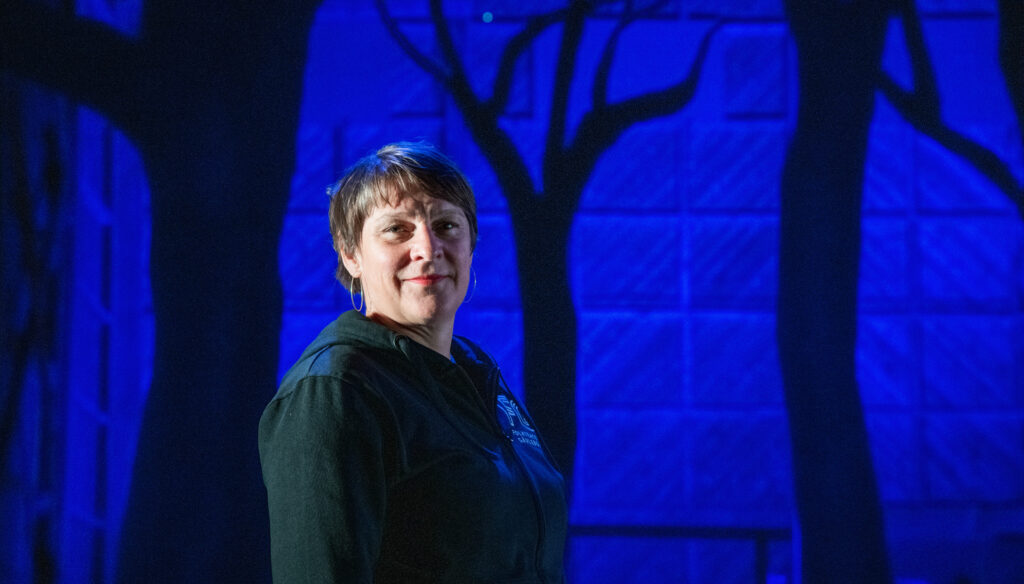
ABOUT THE LIGHTING DESIGN
In our work with Norma, we have set the entire story in ancient Gaul in a kind of fantasy context. There are some clear light markers, such as it being mostly night throughout the opera, the moon having a central place, and the presence of fire. These are concrete elements that I bring into my work, determining certain conditions and setting the tone and mood for the entire lighting design. The light is what should make everything visible in the way the artistic production team envisioned. I work closely with set design, costume, and makeup design. The light is the common element that should enhance everyone’s work and unify the image into one coherent world and vision. But the component I work most closely with is the music. Light and music are closely connected. The emotional world that the music opens up in us is something I want to enhance and amplify with the light.
Maria Ros
Lighting Designer & Light Table Operator

